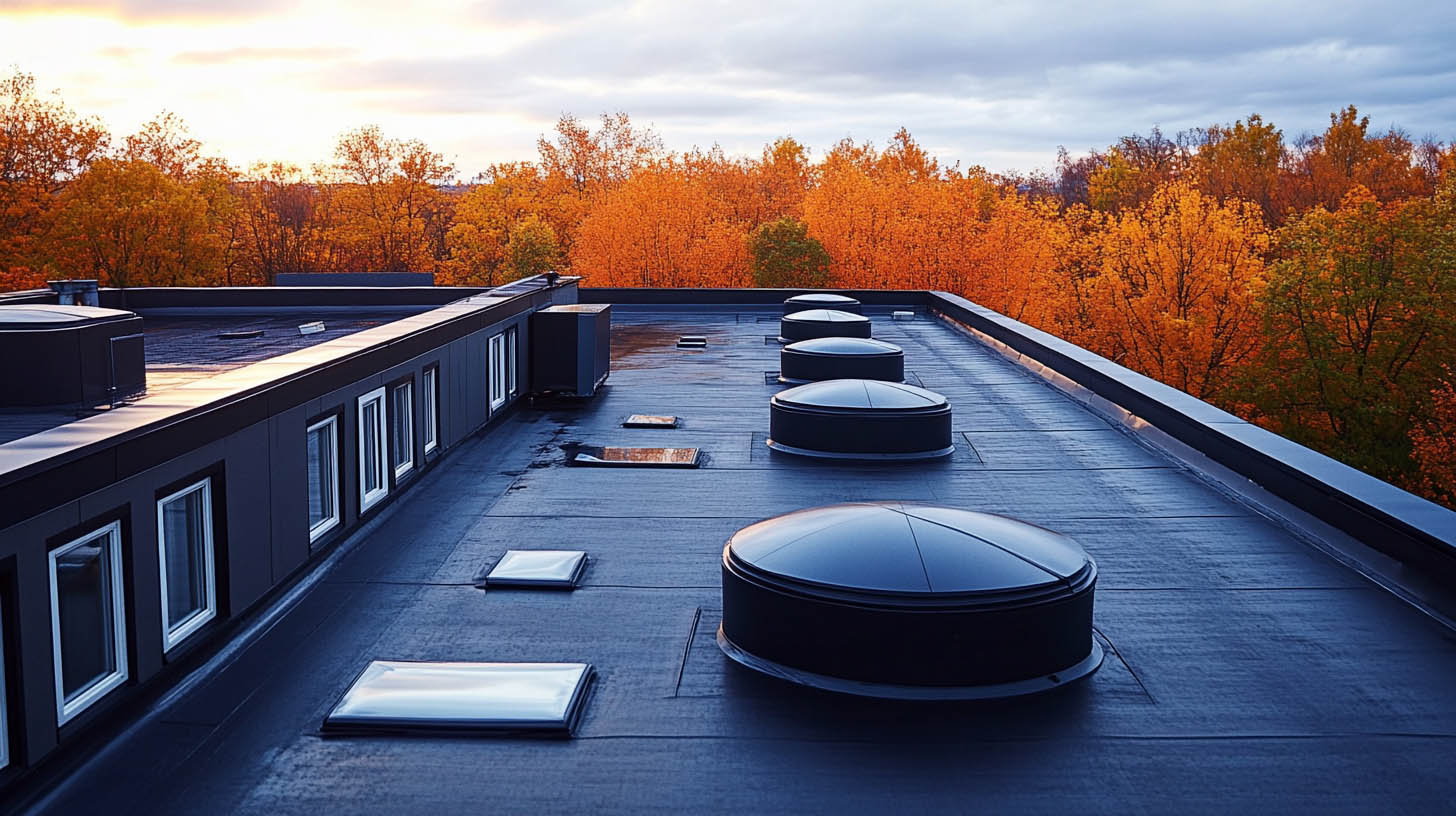
When selecting a roofing material for a flat roof, it’s essential to consider factors like durability, cost, and environmental resilience to ensure long-lasting protection and efficiency. With a variety of options available, Rainstoppers Roofing offers expert guidance in Charleston, WV, helping clients make informed choices for their flat roofing needs.
Key Materials for Flat Roofs
Built-Up Roofing (BUR) Systems
Built-Up Roofing (BUR) has been a longstanding choice, known for its multiple layers of asphalt or coal tar, providing strong waterproofing and fire resistance. BUR systems are often selected for their durability and lifespan, typically reaching up to 30 years with proper maintenance. The added gravel layer on top protects against UV rays, making it ideal for long-term applications.
Modified Bitumen Roofing
Modified bitumen combines asphalt with synthetic additives, enhancing flexibility and durability. This roofing type can withstand severe weather, and the layers offer robust protection, making it a popular choice for commercial and residential roofs alike. Modified bitumen systems are resilient against cracking, extending their life expectancy.
EPDM (Ethylene Propylene Diene Monomer)
EPDM is a durable synthetic rubber membrane frequently used for flat roofs. Made from ethylene and propylene, this material offers exceptional weather resistance, with a lifespan exceeding 20 years. It is highly cost-effective and provides strong UV and ozone resistance, making it an ideal choice in various climates.
TPO (Thermoplastic Polyolefin) Roofing
TPO is a single-ply membrane combining ethylene-propylene rubber and polypropylene, known for its energy efficiency and ease of installation. The reflective surface helps in reducing cooling costs, while its resistance to punctures and chemicals makes it a suitable option for both residential and commercial use.
PVC (Polyvinyl Chloride) Roofing
PVC roofs are valued for their durability and energy efficiency. Reinforced with materials like polyester or fiberglass, they offer resistance to chemicals, fire, and punctures. PVC’s flexibility and longevity make it a top choice, particularly in settings requiring chemical resistance.
Factors to Consider When Choosing Flat Roof Materials
Climate and Environmental Resilience
Climate plays a significant role in material selection. For regions experiencing extreme temperature variations, EPDM and PVC roofing are preferred due to their flexibility and UV resistance. In areas prone to high winds, built-up roofing and modified bitumen offer enhanced stability.
Cost Analysis
Flat roof materials vary greatly in cost. PVC, for instance, may cost between $4 and $12 per square foot, while options like modified bitumen are more budget-friendly, ranging from $2.50 to $9 per square foot. For those seeking a long-term investment, metal roofing might have a higher initial price but compensates with extended durability and minimal maintenance needs.
Installation and Application Techniques
The right installation method contributes to the longevity and performance of the roofing material. Cold-applied methods use adhesives, reducing fire risks, while hot-applied options like tar offer seamless finishes for long-lasting bonds. Fully adhered systems, which bond directly to the substrate, provide resistance against wind uplift, making them ideal in high-stress environments.
Maintenance and Repair Considerations
Ease of maintenance can impact the roof’s long-term cost-effectiveness. EPDM is renowned for minimal upkeep, while TPO requires regular seam checks to maintain durability. PVC simplifies repairs with weldable seams, ensuring a long-lasting, low-maintenance solution.
Additional Aspects to Consider
Energy Efficiency
Flat roof materials like TPO and EPDM help maintain cooler indoor temperatures through reflective surfaces, significantly reducing energy costs in warmer climates. PVC, with its thermal insulation, also contributes to reduced heat transfer.
Compatibility with Green Technologies
Flat roofs offer opportunities to integrate green technology. Solar panels and green roofing are becoming increasingly popular on flat roofs, and materials like TPO and PVC are particularly suited for these applications, providing a sustainable and environmentally-friendly roofing solution.
Lifespan and Durability of Each Material
The lifespan of flat roofing materials varies. TPO and EPDM have a longevity of up to 30 years, while metal roofing often exceeds 50 years, making it a solid investment for those prioritizing durability. PVC roofs offer similar durability and come with warranties for additional assurance.
Conclusion
Choosing the right flat roofing material involves evaluating factors like cost, durability, maintenance, and energy efficiency. At Rainstoppers Roofing, we guide our clients through these considerations to ensure an optimal choice that aligns with their specific needs and budget.
FAQs
- What is the longest-lasting material for flat roofs?
- Metal roofing often lasts over 50 years, making it the most durable choice.
- Which flat roof material is best for energy efficiency?
- TPO and PVC roofs are highly reflective, making them ideal for reducing cooling costs.
- Is EPDM suitable for extreme weather?
- Yes, EPDM’s synthetic rubber composition provides excellent resistance to harsh weather.
- Are green roofs compatible with flat roof materials?
- Yes, materials like EPDM and TPO work well with green roof setups.
- What is the best choice for budget-friendly flat roofing?
- Modified bitumen and built-up roofs (BUR) offer a good balance between cost and durability.
To learn more about the five signs your roof has sustained water damage, click here.
